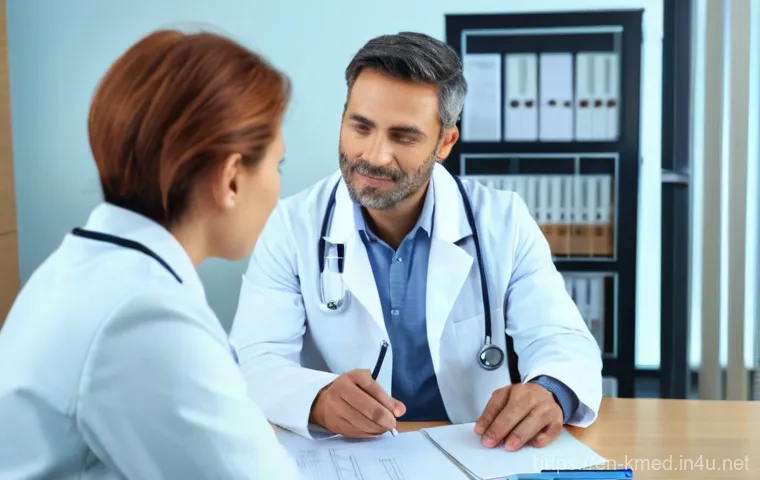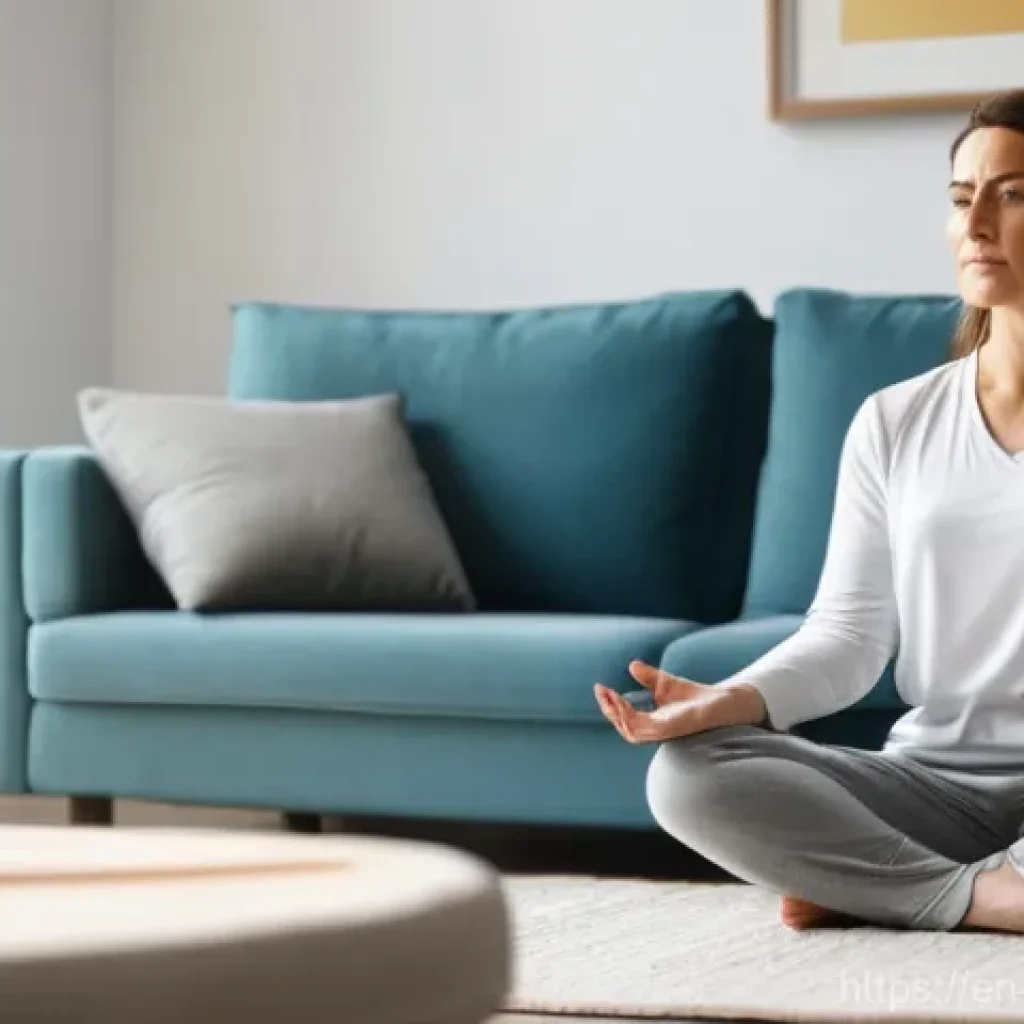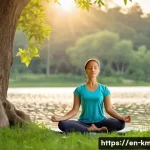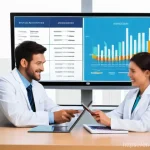Hey there, health seekers! You know, with so many of us embracing the incredible benefits of acupuncture and holistic wellness in our daily lives, a question I often hear (and have certainly pondered myself!) is: ‘What happens if a real emergency strikes?’ It’s a totally valid point, right?
We’re all looking for ways to feel our best through mindful practices, but when it comes to those critical, life-threatening moments, clarity and quick action are absolutely key.
I’ve seen firsthand how confusing it can be to navigate the world of health, whether it’s a regular wellness visit or a sudden, unexpected crisis. So, let’s get real about how we, as advocates for holistic living, can be prepared and make the smartest choices when every second genuinely counts.
It’s all about empowering ourselves with knowledge that bridges traditional care with modern emergency needs. Let’s dive in and truly understand what to do!
Knowing When to Hit the “Emergency Button” on Your Holistic Journey

Okay, so we all love our holistic approaches, right? I mean, who doesn’t feel amazing after a great acupuncture session or a calming meditation? I’ve personally experienced the profound benefits of these practices in managing my everyday stress, aches, and even some chronic issues. But let’s be real for a moment: as much as I advocate for natural healing and mindful living, there’s a critical line we need to acknowledge. When a true emergency strikes – think sudden, severe chest pain, a nasty fall, or trouble breathing – our first instinct and the smartest move should always be to seek conventional emergency medical care. I’ve seen firsthand how tempting it can be to try and “handle it” with our usual wellness tools, but those moments are not the time for experimenting or delaying. The emergency room and urgent care centers are equipped with life-saving technology and highly trained professionals for a reason. Integrating holistic wellness into our lives means knowing its strengths and its limitations, especially when every second counts. It’s about empowering ourselves with the knowledge to make swift, informed decisions that prioritize our immediate safety and well-being.
Recognizing the Red Flags for Immediate Care
From my own experience, it’s easy to dismiss a new symptom, especially if you’re generally healthy and accustomed to managing minor ailments holistically. However, there are some undeniable signals that tell you to drop everything and head straight to the emergency room or call 911. These aren’t the times for a cup of herbal tea or a gentle massage. We’re talking about things like sudden, severe pain anywhere in the body, especially in the chest or abdomen. If you’re struggling to breathe, experiencing sudden weakness or numbness on one side of your body, or if you’ve had a head injury with any loss of consciousness, these are clear indicators that you need immediate, conventional medical attention. Serious burns, compound fractures where a bone might be protruding, or signs of a severe allergic reaction also fall into this category. My personal rule of thumb has become: if I’m even *questioning* if it’s an emergency, it probably warrants a professional medical evaluation right away. It’s always better to be safe than sorry, and delaying care in these situations can have serious, long-term consequences.
Urgent Care vs. Emergency Room: Making the Smart Choice
This is where things can get a little murky, and I totally get it. We’ve all been there, wondering if that persistent cough or a suspected sprain really needs an ER visit or if urgent care would suffice. Urgent care centers are fantastic for those situations that need prompt attention but aren’t life-threatening. Think minor cuts that might need stitches, ear infections, persistent coughs, mild asthma attacks, or even minor fractures and sprains. They’re typically more convenient, have shorter wait times, and are often less expensive than an ER visit. The key differentiator, as I’ve learned, is the severity. If it’s something you’d normally discuss with your primary care doctor but they’re unavailable, urgent care is usually the right call. But for anything truly critical – that severe chest pain, trouble breathing, or signs of a stroke – the ER is the only place equipped to handle those situations. It’s important to know the difference to ensure you get the right care without overburdening emergency services or incurring unnecessary costs.
Crafting Your Personal Emergency Action Plan
Just like I plan my weekly meal preps and workout routines, I’ve come to realize the immense value of having a personal emergency action plan. It’s not about living in fear, but about being proactively prepared for life’s curveballs. Think of it as your wellness safety net. This isn’t just for natural disasters, although those are certainly a part of it; it’s also for personal health crises. I’ve put together a simple, yet comprehensive plan for myself and my family, and it brings a real sense of peace knowing we’ve thought through some of the “what-ifs.” This includes having easy access to important medical information, knowing where our local emergency facilities are, and even having a designated contact person who understands our holistic health preferences. Being prepared strengthens resilience and supports every area of our personal wellness, reducing anxiety and stress during crisis moments.
Essential Information at Your Fingertips
One of the most crucial elements of any emergency plan is having all your vital information readily available. I keep a physical folder, and a secure digital copy, of everything from insurance details to a list of current medications and supplements. This includes dosages, why I take them, and any known allergies or sensitivities. It also has contact information for my primary care physician, my acupuncturist, other holistic practitioners, and key emergency contacts. My personal health history, including any chronic conditions or past surgeries, is summarized concisely. I even include a brief note about my preference for integrating holistic care where appropriate, but making it crystal clear that conventional medical interventions are prioritized in acute emergencies. I’ve found that having this organized gives me immense peace of mind, knowing that if I’m unable to communicate, this information can speak for me.
Building Your Emergency Wellness Kit
Beyond medical records, I’ve put together an emergency kit that goes a step further than just flashlights and bottled water. Of course, those are non-negotiable! But as someone who embraces holistic wellness, my kit also includes a few items that support my well-being during stressful times. I pack a small, portable first-aid kit with essential bandages and antiseptic, but I also include some natural remedies that I frequently use for minor issues, like a soothing essential oil blend for anxiety, or arnica for bruising. Non-perishable, nutrient-rich snacks are a must, along with my monthly supply of any regular medications. I also have personal water filters, which I’ve found incredibly useful even on camping trips. This isn’t about replacing professional medical supplies, but about having comfort items and basic remedies that can make a difference in a pinch, especially if access to conventional stores is limited.
Bridging the Gap: Communicating with Conventional Healthcare Providers
This is an area where I’ve personally had to learn and grow, and honestly, it can sometimes feel like walking a tightrope. When you’re passionate about holistic health, it’s natural to want your conventional doctors to understand and respect your choices. I’ve found that effective communication isn’t just about sharing information, it’s about building trust and fostering a collaborative relationship. It means being open about the acupuncture treatments you receive, the supplements you take, and the lifestyle choices you make. Sometimes, it feels like I’m educating them, and other times, I’m learning from their perspective. The goal is always to create a comprehensive, patient-centered approach where all aspects of your well-being – physical, emotional, and mental – are considered. My experience has shown me that when I approach these conversations with respect and a clear understanding of my own health goals, my doctors are much more receptive.
Open Dialogue About Your Holistic Practices
I can’t stress this enough: be upfront with your doctors about your holistic practices. I know it can feel a little intimidating sometimes, especially if you’re worried about judgment, but it’s absolutely vital for your safety and effective care. I make it a point to list all my supplements, herbs, and any complementary therapies I’m undergoing, like acupuncture or chiropractic adjustments. I explain *why* I choose these paths and how they’ve benefited me. This transparency allows your medical team to see the full picture of your health. For instance, some herbs can interact with prescription medications, and certain therapies might have implications for diagnostic tests. By keeping everyone in the loop, you enable your doctors to provide safer, more integrated care, rather than working in silos. I’ve found that most doctors, even if they don’t fully embrace every holistic modality, appreciate knowing what’s going on so they can monitor for potential interactions or contraindications.
Advocating for an Integrated Care Approach
Advocating for yourself effectively means being informed and prepared. I always go into appointments with a list of questions and concerns, prioritizing the most important ones. If I’m discussing a new treatment option, I ask about potential interactions with my current holistic practices and how they might complement each other. It’s about finding that synergy. I’ve learned that presenting holistic practices not as replacements, but as *complementary* tools that support overall well-being and recovery, often leads to more productive discussions. For example, telling my doctor how acupuncture helps manage my chronic pain allows them to potentially reduce reliance on certain medications, if appropriate. It’s about being a partner in your health, ensuring that your preferences and values are heard, and working together to achieve the best possible outcomes. Don’t be afraid to bring a trusted friend or family member to take notes or advocate for you if you’re feeling overwhelmed.
When Acupuncture Enters the Emergency Picture
This is a fascinating and evolving area, and honestly, it’s something I never really thought much about until recently. Historically, acupuncture wasn’t typically associated with emergency care in Western medicine. But guess what? Things are slowly, but surely, changing! I’ve been following some exciting research that suggests acupuncture can actually be a viable option for managing acute pain in emergency departments, and even help reduce the need for opioid prescriptions. Imagine that! While it’s certainly not a replacement for life-saving interventions like surgery or advanced trauma care, its role in pain, stress, and anxiety management in a crisis setting is gaining traction. It’s not universally available in every ER, of course, but the growing body of evidence is definitely encouraging for those of us who value these practices.
Acupuncture’s Role in Acute Pain and Stress Management
I was so intrigued when I first heard about studies showing acupuncture’s effectiveness in emergency settings, primarily for acute pain relief. My own experiences with acupuncture have always centered around chronic pain or stress, so the idea of it being used for immediate relief in an ER was quite a revelation. What researchers are finding is that it can significantly decrease pain, stress, and anxiety scores for patients presenting in the emergency department. Think about it: an ER visit is inherently stressful, and anything that can help calm the nervous system and reduce pain without heavy medication is a huge win. While it won’t mend a broken bone or stop internal bleeding, its ability to mitigate the immediate discomfort and psychological distress can be incredibly valuable, potentially leading to better patient outcomes and even reducing the need for strong painkillers. It really highlights the versatility and powerful impact of this ancient practice.
Current Landscape and Future Possibilities
Now, I know what you’re thinking: “Will I get acupuncture if I show up at my local ER?” The reality is, probably not everywhere, at least not yet. While some progressive hospitals are starting to integrate it, particularly for pain management, it’s not a widespread standard of care. I’ve seen some limitations, like acupuncturists only being available during specific hours or for outpatient referrals. However, the movement towards integrative medicine is strong, and there’s a growing recognition that combining the best of conventional and complementary therapies offers a more comprehensive approach. My hope, and what I believe we’ll see more of in the future, is increased collaboration between emergency medicine and licensed acupuncturists. Imagine a world where, after a life-threatening crisis is stabilized, gentle acupuncture could immediately aid in pain and anxiety, kickstarting the recovery process in a truly holistic way. It’s an exciting prospect!
Post-Emergency Recovery: Integrating Holistic Support

Surviving a medical emergency is, without a doubt, a monumental hurdle. But from what I’ve seen and personally experienced with others, the recovery period that follows is just as, if not more, critical. It’s not just about healing the physical wounds; it’s about mending the emotional and mental impact too. This is where holistic practices truly shine and become indispensable. After a major health scare, our bodies and minds are often in a state of shock and depletion. I’ve learned that a truly comprehensive recovery plan needs to address the whole person, helping to rebuild strength, manage lingering pain or anxiety, and regain a sense of balance. This is the perfect time to lean into those mindful practices and natural remedies that support your body’s innate healing wisdom.
Nourishing Body and Mind After Trauma
When I reflect on intense periods of stress or recovery, the first thing that comes to mind is how much my body craves nourishment – not just food, but holistic nourishment. After an emergency, your body has been through a significant ordeal, and it needs support to repair and regenerate. I focus heavily on a whole-foods diet, packed with nutrient-dense fruits, vegetables, and healthy fats, while avoiding processed foods that can hinder healing. Beyond food, relaxation activities become paramount. Gentle yoga, meditation, deep breathing exercises, and even simple walks in nature can dramatically reduce the “fight or flight” response that often lingers after trauma. These practices help improve circulation, promote deeper relaxation, and boost those natural “feel-good” chemicals in the brain. It’s about creating a nurturing environment for your entire being to heal and restore itself.
Sustaining Wellness and Preventing Future Crises
True recovery isn’t just about getting back to where you were; it’s about building an even stronger, more resilient foundation for the future. I believe in proactive wellness, and after a health crisis, this becomes even more important. It involves consistent exercise, even if it’s just gentle movement to start, to help with mental and emotional processing. Sleep management is another powerful tool I swear by. Ensuring a cold, dark, and quiet sleep environment, and sticking to consistent bedtime routines, significantly aids recovery and builds resilience. Additionally, maintaining those healthy communication lines with both conventional and holistic practitioners is key for ongoing monitoring and personalized adjustments to your wellness plan. It’s about learning from the experience, identifying areas where you can build greater resilience, and integrating those lessons into a sustainable, preventative lifestyle.
The Unseen Strength: Preventative Care as Your Best Defense
You know, for all the talk about what to do *during* an emergency, I genuinely believe that the most powerful tool in our holistic arsenal is preventative care. It’s not as dramatic as a last-minute dash to the ER, but it’s the quiet, consistent work that truly fortifies our health and builds an incredible buffer against illness and crisis. From my own journey, I’ve found that investing in preventative practices makes me feel more confident, stable, and well-equipped to handle whatever life throws my way. It’s about optimizing your health *before* issues arise, so if an emergency does happen, your body and mind are in the strongest possible position to cope and recover. This is where the daily choices truly pay off, building a foundation of resilience that can withstand unexpected challenges.
Building a Resilient Foundation Through Daily Habits
My daily routine is built around a few non-negotiables that I feel really contribute to my overall resilience. It starts with a nutrient-rich, balanced diet – focusing on whole, unprocessed foods that fuel my body and mind. Regular physical activity, whether it’s a vigorous hike or a calming yoga session, is absolutely essential for managing stress and maintaining physical strength. I also prioritize adequate sleep, because I’ve learned that a tired body and brain are far more vulnerable to stress and illness. Incorporating mindfulness and meditation helps me cultivate mental resilience, allowing me to approach challenges with a clearer mind and a calmer demeanor. These aren’t just “good ideas”; they are the foundational pillars of preventative care that, over time, create a body and mind that are better able to adapt and heal when faced with adversity.
Early Detection and Proactive Wellness Checks
While I champion holistic approaches, I also firmly believe in the power of modern medicine for early detection. Regular check-ups with my primary care physician, along with recommended screenings, are non-negotiable for me. This includes blood tests, screenings appropriate for my age and gender, and any other preventative measures my doctor suggests. It’s a proactive step to catch potential issues before they become emergencies. Integrating this with my holistic practices means I’m getting a full, comprehensive view of my health. For instance, my doctor might identify a nutritional deficiency, which I can then address through both dietary changes and targeted supplements, sometimes guided by a holistic nutritionist. This dual approach ensures I’m not only feeling good day-to-day but also have clinical data backing up my wellness efforts, giving me an even stronger sense of security.
Empowering Yourself with Informed Decision-Making
Ultimately, navigating the world of health, especially when emergencies loom, comes down to empowering ourselves with knowledge. I’ve always believed that the more informed I am, the better decisions I can make for my own well-being and that of my loved ones. It’s about understanding the unique strengths of both holistic and conventional medicine and knowing when each is most appropriate. This isn’t just theory; it’s practical, real-world application that can literally save lives and significantly impact recovery. My journey into holistic wellness has taught me that being truly “well” means being prepared for anything, and that preparedness starts with clarity and confidence in your choices. It truly gives you a sense of control, even when situations feel out of control.
Understanding the Strengths of Each Approach
One of the biggest lessons I’ve learned is that it’s not an “either/or” situation; it’s about “both/and.” Conventional medicine is undeniably exceptional at acute, life-saving interventions – think emergency surgery, advanced diagnostics, or critical trauma care. I wouldn’t hesitate for a second to go to an ER for a broken bone or a suspected heart attack. Holistic medicine, on the other hand, excels at promoting overall wellness, preventing illness, and supporting the body’s natural healing processes for chronic conditions, stress management, and emotional well-being. It’s brilliant for building resilience and addressing the root causes of imbalance. By truly understanding where each approach shines, you can make incredibly effective choices. It’s like having a well-rounded toolkit; you wouldn’t use a hammer to tighten a screw, and you wouldn’t use a screwdriver to nail something in!
Your Role as an Active Participant in Your Health
I’ve always felt most empowered when I’m an active participant in my own healthcare journey. This means doing my research, asking questions, and articulating my preferences clearly to all my healthcare providers. It’s about shared decision-making, where my values and goals are considered alongside medical advice. For example, if a doctor recommends a certain medication, I’ll ask about alternatives, potential side effects, and how it might interact with my current lifestyle or supplements. I’ve also found that bringing a trusted friend or family member to appointments can be incredibly helpful for taking notes and remembering key information. Your health is your most valuable asset, and being engaged, informed, and assertive (while still being respectful, of course!) ensures that you receive care that truly aligns with your needs and beliefs. It’s your body, your health, and your journey.
| Condition Severity | Recommended Care Type | Holistic Complementary Role (After Initial Stabilization) |
|---|---|---|
| Life-Threatening (e.g., severe chest pain, stroke symptoms, major trauma, uncontrollable bleeding, compound fractures) | Emergency Room (ER) / Call 911 | Anxiety reduction (e.g., deep breathing, aromatherapy), pain management support (e.g., gentle acupuncture if available/approved), post-trauma recovery (e.g., nutrition, mindfulness). |
| Urgent, Non-Life-Threatening (e.g., minor fractures/sprains, persistent fever, moderate infections, deep cuts, mild asthma attacks) | Urgent Care Center | Immune support (e.g., herbal remedies, vitamins), stress management (e.g., meditation), gentle movement for recovery. |
| Routine / Chronic Management (e.g., chronic pain, stress, digestive issues, wellness checks, preventative care) | Primary Care Physician (PCP) / Holistic Practitioner | Acupuncture, herbal medicine, dietary changes, mindfulness, yoga, massage, lifestyle coaching. |
Concluding Thoughts
Whew! We’ve covered a lot today, haven’t we? It’s truly been a journey through some critical considerations for anyone balancing a holistic lifestyle with the undeniable realities of medical emergencies. Remember, our holistic practices are powerful allies in building long-term health and resilience, but knowing when to tap into the life-saving capabilities of conventional medicine isn’t just smart—it’s empowering. It’s about being truly prepared, advocating for ourselves, and understanding that the best path forward often involves harmonizing the strengths of both worlds. Stay well, stay informed, and trust your instincts!
Useful Information to Know
1. Keep an “In Case of Emergency” (ICE) file. This should include your medical history, current medications (both prescription and supplements), allergies, insurance details, and emergency contact numbers. Having this physically and digitally accessible can be a lifesaver when seconds count. Think about a simple, clear document that can be quickly shared with first responders or medical staff.
2. Familiarize yourself with local emergency services. Know the location of the nearest Emergency Room and Urgent Care center. Understand the types of conditions each facility is best equipped to handle, as this knowledge can save you valuable time and unnecessary costs in a non-life-threatening situation.
3. Always communicate openly with all your healthcare providers. Whether it’s your family doctor, a specialist, or your holistic practitioner, ensure everyone knows about your full health picture, including any supplements, herbal remedies, or complementary therapies you are using. This transparency helps prevent potential interactions and ensures integrated, safer care.
4. Build a comprehensive personal emergency kit. Beyond the usual survival items like water and flashlights, consider adding a basic first-aid kit, any essential personal medications, comforting essential oils, or specific herbal remedies you rely on for minor ailments. It’s about self-sufficiency and peace of mind during unexpected disruptions.
5. Prioritize preventative care and regular wellness checks. While we focus on emergencies, remember that the best defense is a strong offense. Consistent healthy habits, a balanced diet, regular exercise, stress management, and routine check-ups with your doctor are the foundation for a resilient body and mind, making you better equipped to handle any unexpected health challenges.
Key Takeaways
Navigating your health journey requires a balanced approach, seamlessly integrating holistic wellness with conventional medicine. Remember to empower yourself with knowledge about when to seek immediate, conventional care for emergencies, and when holistic practices can effectively support your overall well-being. Proactive planning, open communication with healthcare providers, and a commitment to preventative care are your strongest allies in building a resilient, healthy life.
Frequently Asked Questions (FAQ) 📖
Q: When a real emergency hits, should my first stop be my acupuncturist’s office or the emergency room?
A: This is such a critical question, and honestly, it’s one I’ve wrestled with myself and heard countless times from friends and fellow wellness enthusiasts.
When we talk about a real emergency – think sudden, severe chest pain, a serious injury, difficulty breathing, or anything that feels life-threatening – your immediate and absolute priority must be to seek conventional emergency medical care.
Period. I’ve personally seen situations where people hesitated, thinking their regular wellness routine might be enough, and it almost had dire consequences.
While acupuncture and holistic approaches are incredibly powerful for overall well-being, chronic conditions, and even acute pain management, they are not designed to stabilize a critical, sudden medical crisis.
Call 911 (or your local emergency number), get to the nearest emergency room, and let trained medical professionals assess and treat the immediate danger.
Once you’re stable and out of immediate harm’s way, then absolutely, discuss with your doctors how your holistic practices can support your recovery and long-term health.
It’s about knowing the right tool for the right job, and in an emergency, that tool is always conventional emergency medicine. Trust me on this – your life could depend on it.
Q: Can continuing my holistic wellness practices, like acupuncture, help me avoid emergencies or recover faster if one does occur?
A: What a brilliant follow-up question! From my experience, the answer is a resounding yes, but with a crucial distinction. While acupuncture can’t magically prevent a car accident or a sudden appendicitis attack, maintaining a consistent holistic wellness routine absolutely builds a stronger, more resilient foundation for your health.
Think of it this way: when I regularly get acupuncture, focus on nourishing foods, and practice mindfulness, my body feels more balanced, my immune system seems more robust, and my stress levels are much more manageable.
This proactive approach can potentially reduce your susceptibility to certain health crises that are often linked to chronic stress or inflammation. For instance, better stress management might reduce your risk of stress-induced cardiac events over time.
And if, God forbid, an emergency does happen, having a well-nourished, balanced body through your holistic practices can definitely aid in your recovery process.
I’ve personally found that when I’m consistent with my wellness, my recovery from even minor setbacks feels quicker and smoother. It’s about giving your body the best chance to heal and thrive, both before and after a crisis.
Just remember, it’s complementary, not a replacement for immediate emergency care!
Q: How can I best prepare myself and my family for medical emergencies while still prioritizing our holistic lifestyle?
A: This is where we truly empower ourselves, isn’t it? It’s all about integrating the best of both worlds. Here’s what I’ve found incredibly helpful for myself and what I always recommend to my community.
First, have a clear, easily accessible list of all your current medications, supplements, allergies, and existing medical conditions, including any holistic treatments you’re receiving.
Keep it on your fridge, in your wallet, and on your phone. My personal trick? I use an app on my phone and also have a physical card in my purse – that way, it’s always there.
Second, know your local emergency services numbers and the fastest route to the nearest emergency room. Sounds basic, but in a panic, it’s easy to freeze.
Third, consider having a “go bag” ready with essentials, especially if you have chronic conditions or kids. For us, it includes comfort items, basic first aid, and copies of important documents.
Finally, and this is huge, communicate openly with both your conventional doctors and your holistic practitioners. Let them know about each other. A good integrative doctor will appreciate understanding your full health picture.
This way, you’re not just hoping for the best; you’re actively preparing for anything life throws your way, beautifully blending your holistic values with essential modern safety nets.
It brings such peace of mind, truly.






